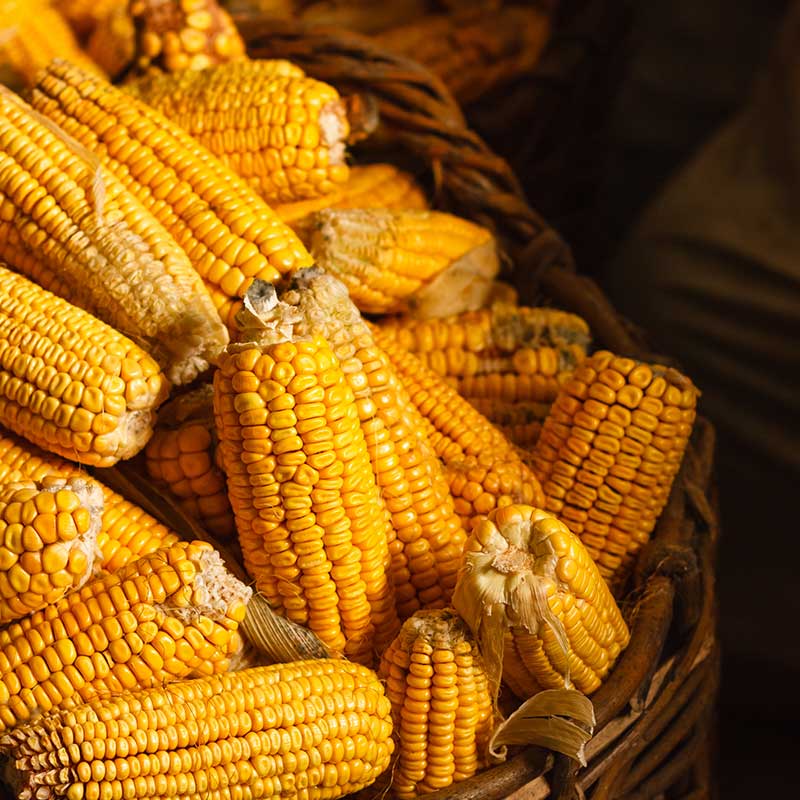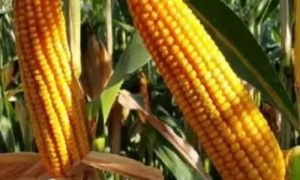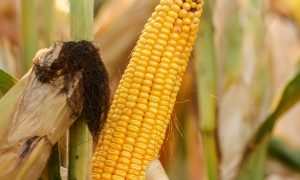Transgenics contaminate a third of Brazil’s traditional corn in semiarid region

Eighteen years after transgenic crops were legalized in Brazil, a new study has warned that traditional corn crops in Brazil’s semiarid Northeast are increasingly contaminated.
The study found that of the 1,097 samples collected in 138 municipalities in the Northeast, more than a third contained genetically modified genes, and that in some cases, up to seven different types of transgenic genes were found in a single seed.
To be more specific, the spread of transgenic contamination in traditional species reduces biodiversity. This makes Brazil more vulnerable to climate changes, pests and other challenges that crops may face.
If the species continue to lose their individual characteristics, the tendency will be for fewer or no naturally adapted varieties that can resist certain types of pests or be resilient under certain climate conditions.
The resulting impact will be significant because Brazil is rich in its diversity of this type of grains: There are 23 strains of corn and hundreds of other varieties in the country. Each “race” is a set of related corn varieties. However, according to Embrapa data, 90% of all the corn cultivated in Brazil is transgenic.
In addition, the semiarid region where the study was carried out is home to endemic corn species, meaning species that grow only in that region. This is notable because the rainfall in the semiarid area is concentrated into four or five months out of the year, a pattern that has altered with climate change. Therefore, raising species adapted to the region increases the chances of guaranteed harvests.
Firsthand, the data warn of food insecurity because of lost biodiversity combined with increasing climate changes.
According to Gabriel Fernandes, one of the study’s authors and CEO of the Zona da Mata Center for Alternative Technologies (CTA), the cross-contamination of genes that happens in the fields is one of the most serious issues.
“The samples that were found with up to seven transgenic genes doesn’t mean they were tested on the same plant. As the seeds are shipped for sale or distribution without any monitoring or controls, there is plenty of chance for new crosses to happen randomly. There is very little control,” he explains.
Also according to Fernandes, the findings point to the fact that it is unfair to small farming families who select, store and trade creole seeds. “The farming families assume 100% of the burden to keep contamination from happening. They have to deal with the risks and losses resulting from uncontrolled contamination. There is a lot of incentive from agribusiness, which uses transgenic seeds, yet there is no policy to prevent contamination,” he adds.
Fernandes says the study was unique both in scope and methodology compared with what exists in the academic literature. “The study involved a large sample including 1,097 varieties collected in 10% of the municipalities in the semiarid region. Plus, we carried out the study in the field, in the actual context where the families live, rather than inside a laboratory. The families themselves helped us collect the samples,” he explains. The study was undersigned by not only the CTA but also the Brazilian Semi-Arid Articulation, the National Agroecology Articulation and Embrapa.
When questioned by Mongabay reporters on the topic, the National Biosafety Technical Commission affirms in an email that it does not recognize any research on contamination of creole corn in the semiarid region by transgenic genes, and for that reason, will not make a statement.
The agency affirms that “the monitoring currently in use is based on science and is put into practice when a new gene is inserted in the plant.” The same email states that “the environmental monitoring reports presented up to the present time have not shown evidence of any environmental damage caused by the corn.”
How contamination occurs
Until 2020, Suzana Silva, a farmer living at Sítio Furnas, in the municipality of Montadas, Paraíba, would receive negative results from transgenic tests. These were always personal victories, given the fact that her small farm is surrounded by a large estate with extensive unmonitored cultivation. But in 2022, Silva found out that her corn had been contaminated. She says she believes that the contamination happened via pollen grains from corn located in a field adjacent to hers.
“There is a businessman here, a guy who owns an estate and who plants a lot [of corn]. I don’t know if his corn is contaminated, but it’s possible because he plants a lot. So it’s complicated. Small farmers plant traditional grains, but the others don’t and so everything gets contaminated. We have to think about what this means for our health,” she says.
According to Silva, her corn harvests have not been the same since she got the positive result on her transgenics test. “The corn isn’t as productive as it used to be. The year that I got the positive result, [the harvest] was only good enough for animal feed. Before, the cobs of corn were large, but now they are irregular. I don’t know if it’s because of the inconsistent rainfall or because of the transgenics.”

When genetically modified plants were approved in Brazil in 2005, there was already some evidence of contamination risk. According to geneticist Rubens Nodari, researcher and professor in the University of Santa Catarina’s Graduate School for Plant Genetics Resources’ Department of Phytotechnology, it had already been proven that pollen from transgenic species could travel kilometers.
“Studies showed that 0.2% of transgenic pollen can travel for kilometers. In fact, this isn’t a large number. But if we consider the fact that corn can produce around 20 million grains of pollen, then we can see there is enough to contaminate other plants 3 km away,” explains Nodari.
The work required to avoid contamination
Family farmer Paulo Alexandre da Silva, who lives in Lagoa do Jogo in the Oziel Pereira settlement, municipality of Remígio, Paraíba, sends his corn for analysis every year. He is proud that, to this day, it remains free of contamination. The path to keeping his corn pure has not been easy, he says.
Paulo Silva created the Community Seed Bank to safeguard the species of creole corn that remain pure. There, he keeps species that have been recuperated, catalogued and stored. The idea is that local farmers will plant only seeds from the bank, guaranteeing that only local and creole species will be farmed there.
His settlement is home to 50 families but only 32 participate in the seed bank. The immediate need to plant and a lack of resources oftentimes forces families to plant seeds distributed by government agencies or to buy their seeds from warehouses that don’t provide seed origin. Silva guarantees that these are the main gateways by which transgenics enter the community.
“I hold meetings with the farmers to make them aware of contamination from transgenics. I trade, sell and even give away seeds from our bank to keep people from using contaminated seed. I plant a living barrier of Gliricidia sepium, mandacaru cactus and Mimosa caesalpiniifolia [to keep out transgenic pollen grains]. I arrived here in 2002 with my seeds and they have never become contaminated.”
According to Silva, the more variety, the greater the chances for a good harvest, even in years with little or late rainfall. “There are seeds that take longer to sprout and others that are faster. These seeds are adapted to our region, so we get a good harvest even in drought years.”

Caring cooperatively for creole seeds
The seed banks where Paulo Alexandre da Silva and Suzana Silva participate are part of a collective project involving 65 community seed banks and one regional bank in 13 municipalities in Paraíba state’s inland Borborema Hub region. The project is maintained by a centuries-old seed trading tradition among farmers here.
These seed banks offer support to families by providing seeds adapted to climate change, which are already affecting this region. They also guarantee a safe source so that families don’t need to acquire seeds from unknown sources, elevating the risk of planting a species contaminated by transgenics.
This is part of a series of activities adopted with the goal of avoiding contamination from transgenics in the region. Another project is the Seed Bank Territorial Commission, which meets frequently to discuss topics of interest to the seed guardians, as those who protect the creole seeds are called.
Yet another project is a campaign called “Don’t Plant Transgenics So You Don’t Erase My History,” which produces educational materials to teach family farmers about transgenics and the ways in which they damage creole seeds. The campaign has begun testing creole seeds and gives certificates to those farms without contamination.
Farmers in the Borborema Hub also created their own brand of corn products that are made exclusively from creole seeds to be sold at the Borborema Co-op. They work in partnership with AS-PTA, a community legal group that helps farmers preserve creole seeds.
According to Emanuel Dias, agronomy engineer and technical adviser to AS-PTA, this was the path created to keep transgenics out of processed foods. “They created Flocão da Paixão [cornflakes], Xerém da Paixão [corn meal], Fubá da Paixão [corn flour] and bran for animal feed. All this because there’s no point in fighting transgenics in the field and then eating couscous made from pre-cooked transgenic corn.
















